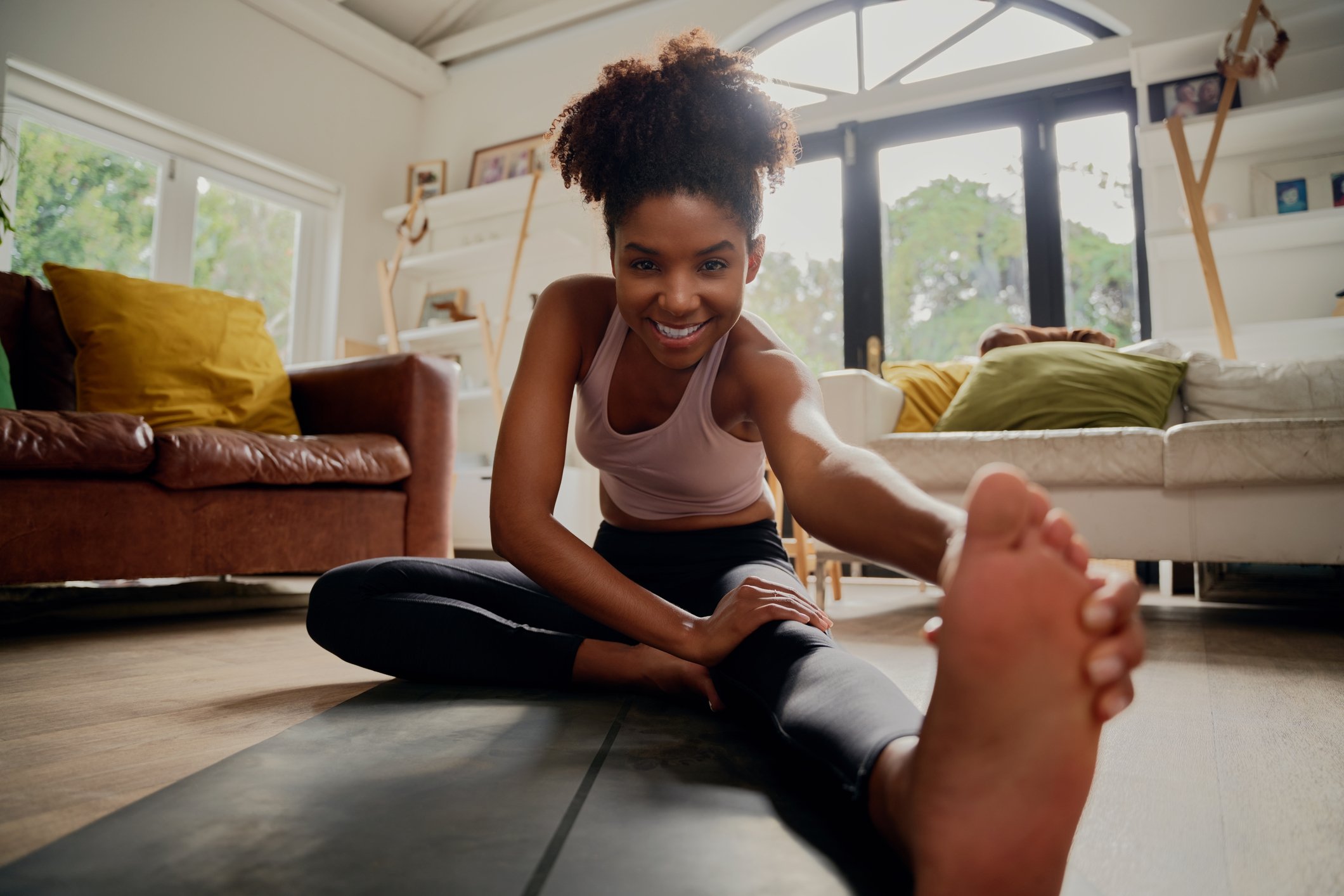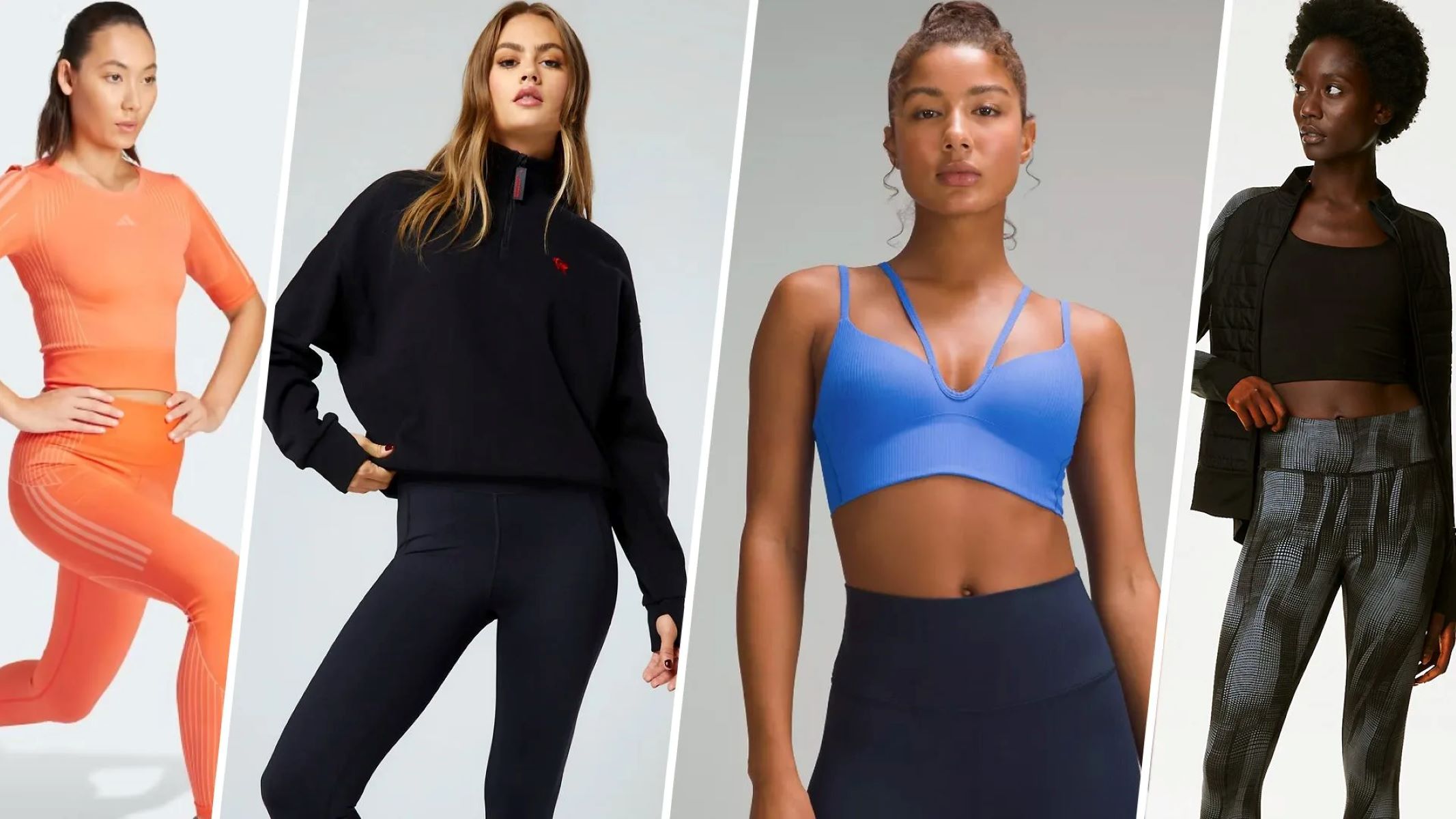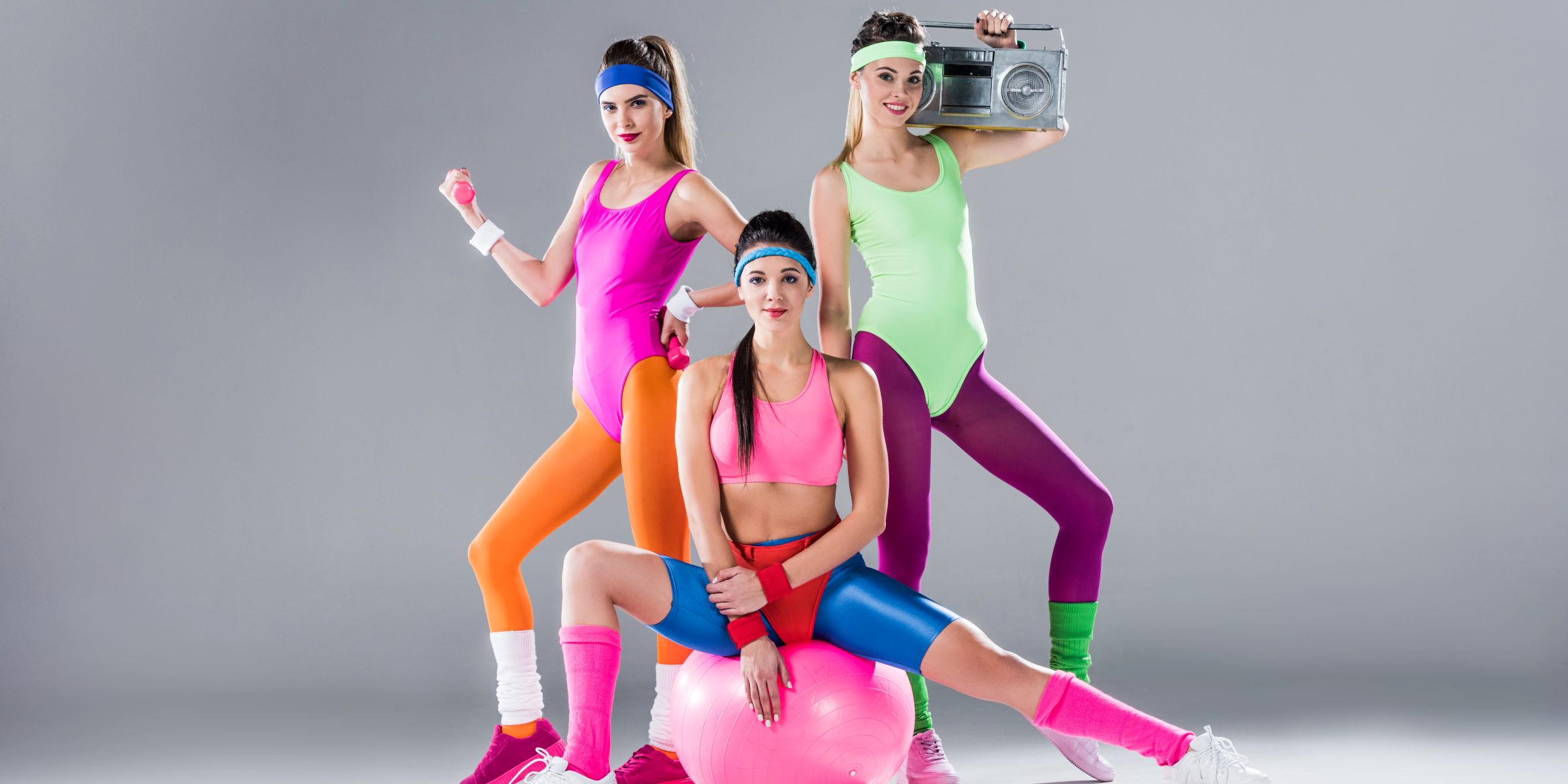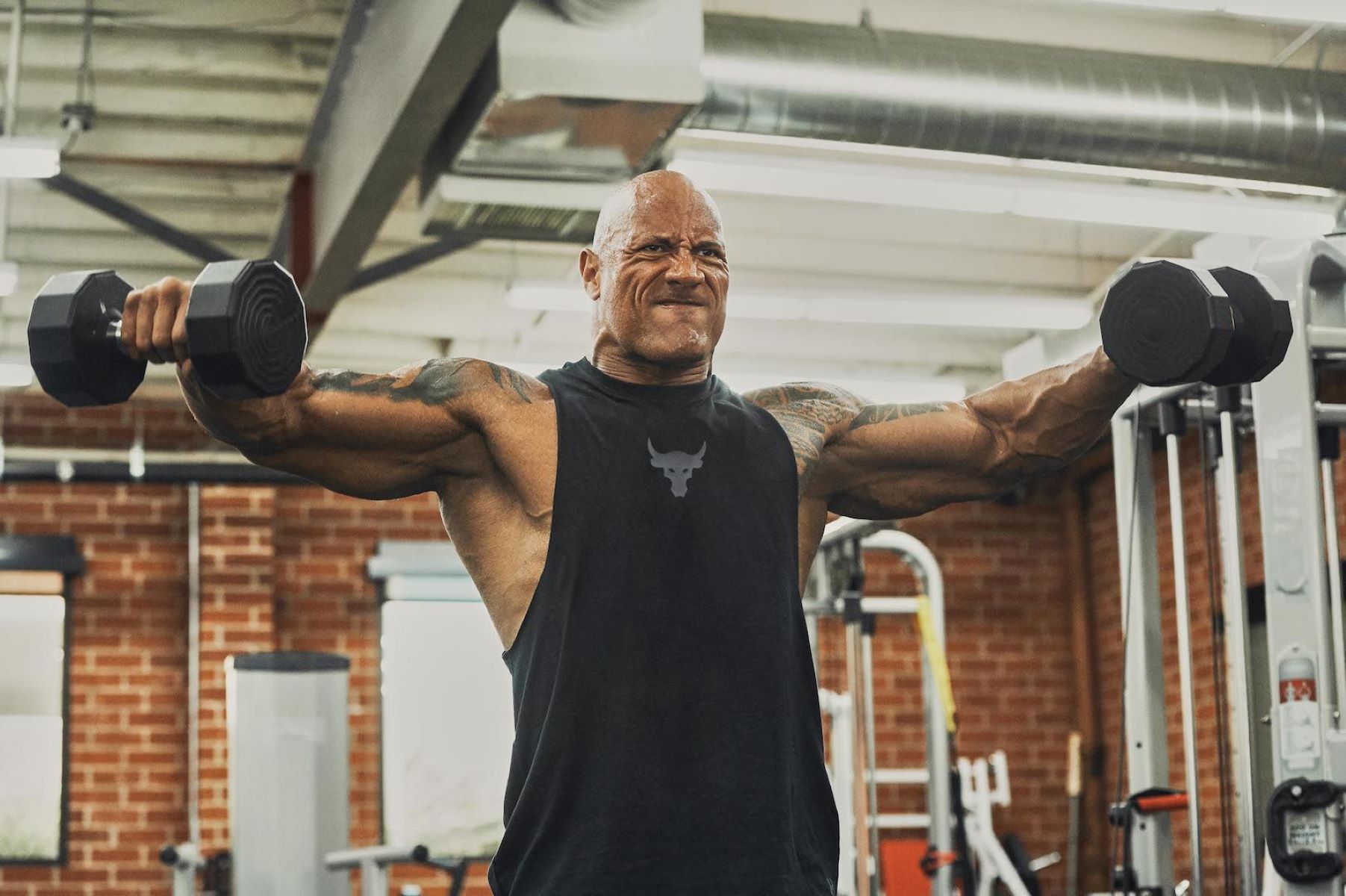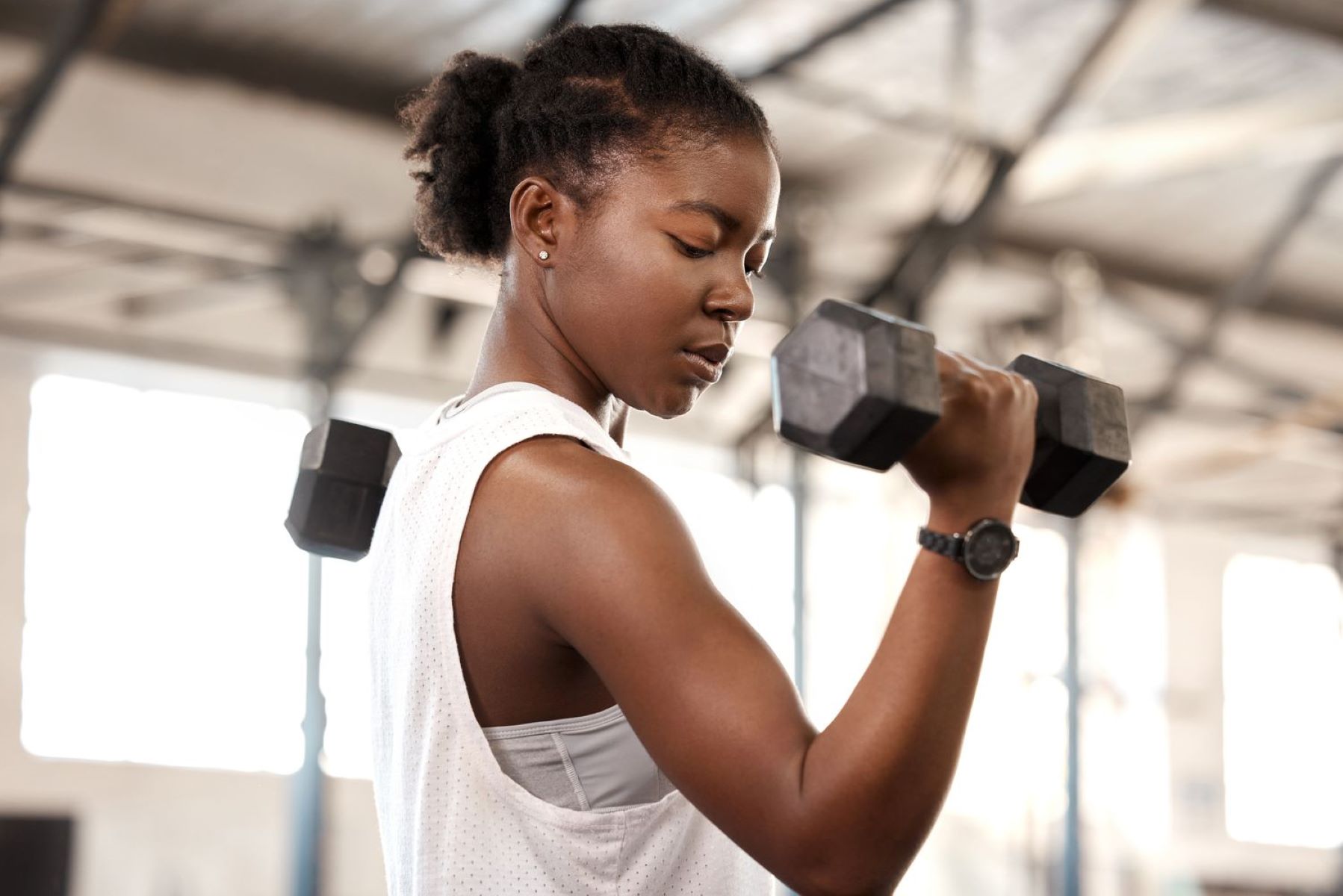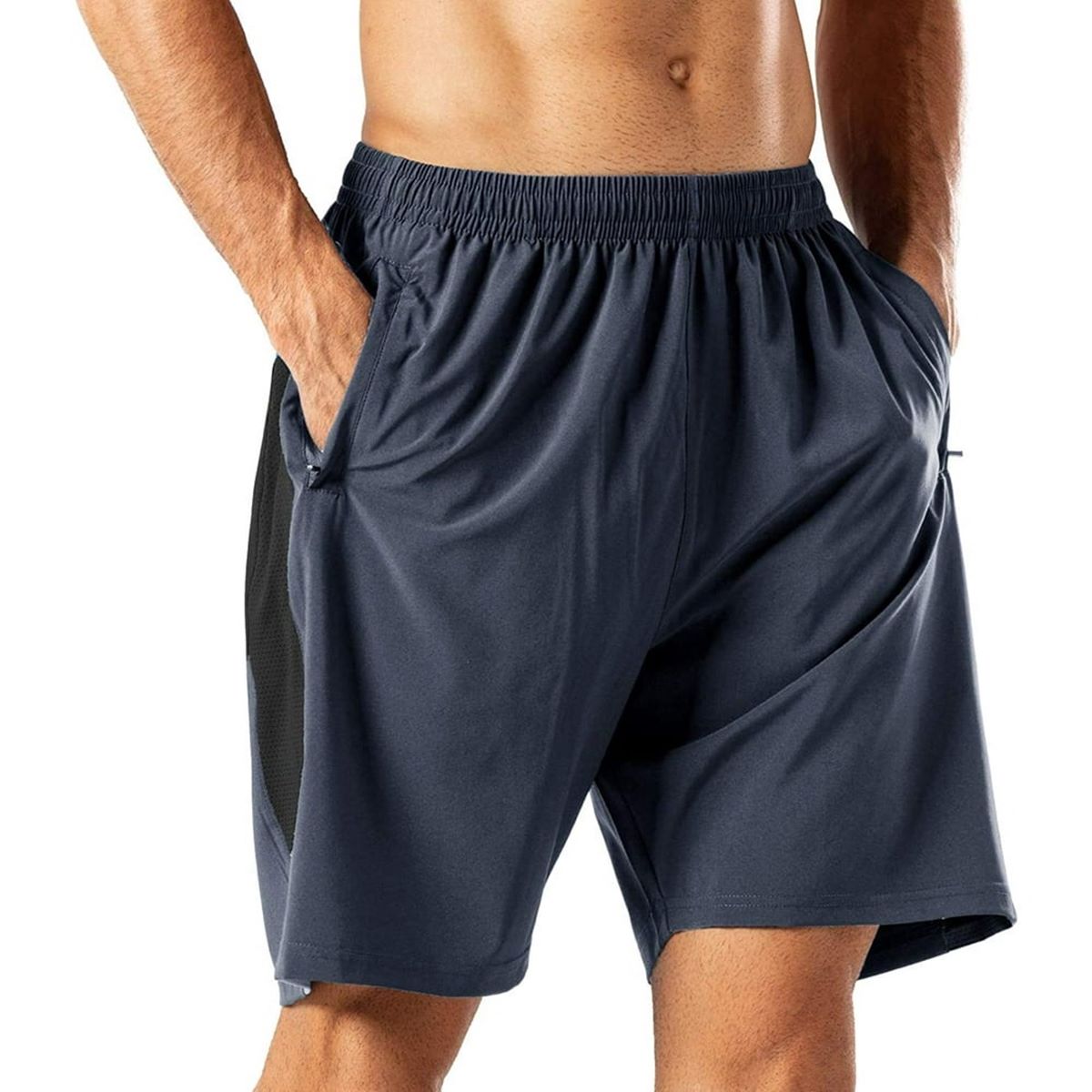Home>Misc>Featured>How Much Do Millennials Spend On Activewear Daily
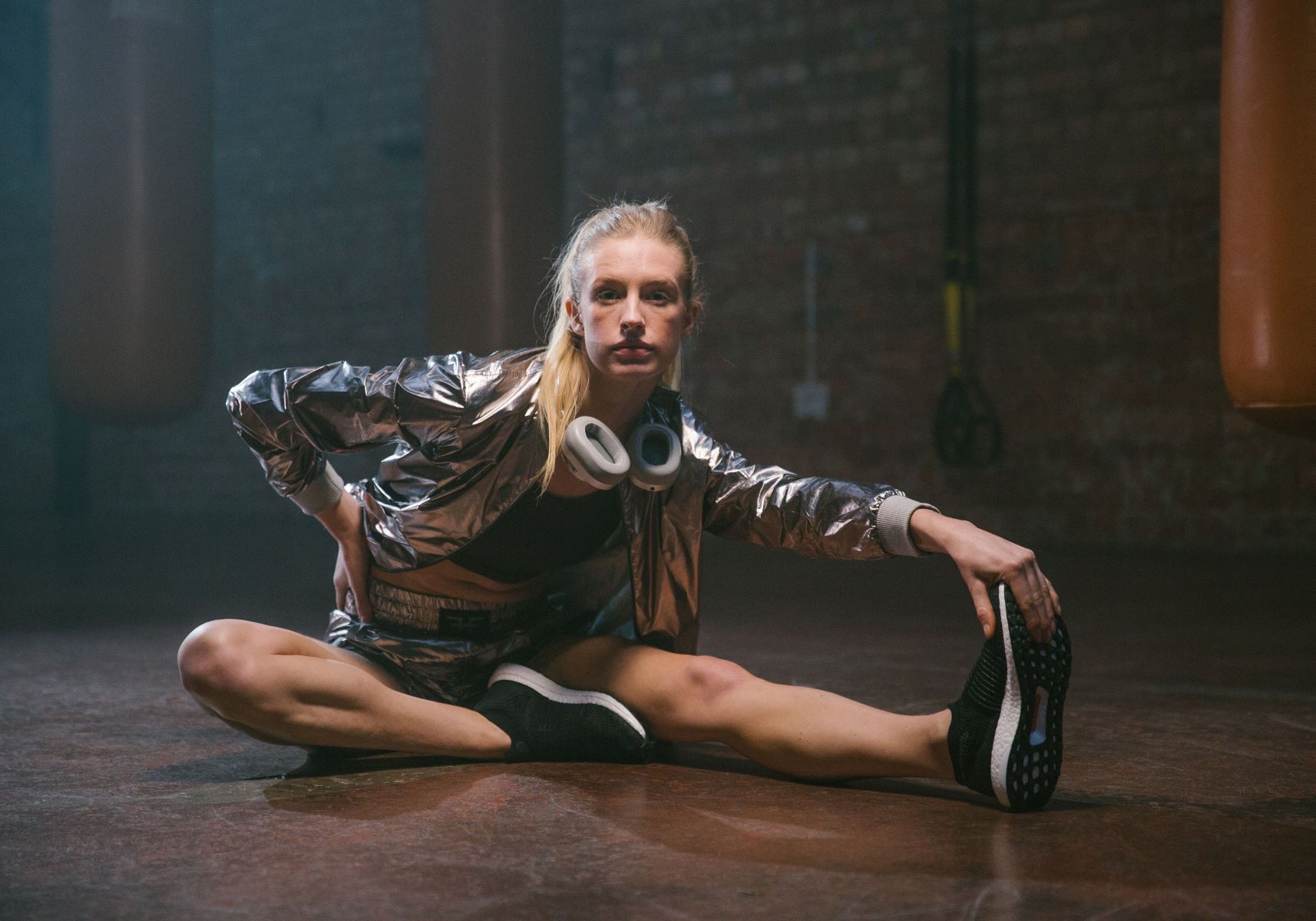

Featured
How Much Do Millennials Spend On Activewear Daily
Modified: August 19, 2023
Discover the spending habits of millennials on activewear in our featured article. Find out how much they spend daily and explore the latest trends in this booming industry.
Introduction
Welcome to the world of activewear, where fashion and fitness intertwine. In recent years, the popularity of activewear has soared, with millennials being at the forefront of this trend. Activewear has become more than just workout attire; it has become a lifestyle.
With the rise of athleisure, millennials are embracing activewear not only for their fitness routines but also as a fashion statement. From leggings and hoodies to sneakers and sports bras, this versatile and stylish clothing has found its place in millennials’ wardrobes.
But just how much do millennials spend on activewear, and what factors influence their purchasing decisions? In this article, we will delve into the world of millennials and their daily spending habits on activewear.
To gather the data for this article, we conducted a survey among a diverse group of millennials across various regions. The participants were asked about their spending habits, brand preferences, and the factors influencing their purchasing decisions when it comes to activewear.
Let’s explore the fascinating world of activewear and discover the insights into millennials’ spending behaviors.
Methodology
In order to provide accurate insights into millennials’ spending habits on activewear, we conducted a comprehensive survey among a diverse group of respondents. The survey was designed to gather information about their daily spending on activewear, factors that influence their purchasing decisions, and their brand preferences.
The survey was distributed online, allowing us to reach a wide range of millennials from different backgrounds and locations. The questionnaire consisted of multiple-choice questions as well as open-ended questions to gather more detailed responses.
Participants were asked to provide information about their age, gender, and geographical location to ensure a diverse representation. They were then asked to indicate their daily spending on activewear, ranging from “less than $10” to “more than $50.” Additionally, they were asked to rank the importance of various factors that influence their purchasing decisions, such as price, quality, brand reputation, and social media influence.
The survey also included questions about brand preferences, with participants asked to list their top three favorite activewear brands. This provided valuable insights into the brands that are most appealing to millennials when it comes to activewear.
The data gathered from the survey was analyzed using statistical techniques to identify trends and patterns. The results were then compiled and categorized to provide a comprehensive overview of millennials’ daily spending on activewear and the factors that influence their purchasing decisions.
It’s important to note that while the survey provides valuable insights, the results may vary depending on individual preferences and circumstances. However, the data collected offers a general understanding of the spending habits and preferences of millennials when it comes to activewear.
Overview of Activewear Industry
The activewear industry has experienced a significant boom in recent years, driven by the growing demand for athleisure fashion and the increasing focus on health and fitness among millennials. Activewear refers to clothing designed specifically for physical activities, including workouts, sports, and outdoor activities.
Historically, activewear was primarily associated with traditional workout gear, such as sweatpants and t-shirts. However, in recent years, the industry has undergone a massive transformation. Activewear has evolved into a fashionable and versatile clothing category that can be worn both inside and outside the gym.
One of the key drivers of the activewear industry’s growth is the rising popularity of athleisure fashion. Athleisure combines athletic wear with everyday fashion, allowing individuals to effortlessly transition from the gym to casual outings. This shift in consumer preferences has prompted activewear brands to innovate and create stylish designs that blur the boundaries between fitness and fashion.
The activewear industry offers a wide range of clothing options, including leggings, sports bras, crop tops, hoodies, sneakers, and more. These garments are crafted with advanced materials and technologies that provide comfort, breathability, and moisture-wicking properties, making them ideal for physical activities.
In addition to fashion and functionality, sustainability has also become an important aspect of the activewear industry. Many brands are now incorporating eco-friendly materials and sustainable manufacturing practices to meet the growing demand for ethical and environmentally-conscious clothing.
Furthermore, the activewear industry has witnessed a surge in collaborations between fashion brands and fitness influencers and celebrities. These partnerships have played a crucial role in boosting brand visibility and establishing credibility among millennial consumers.
Overall, the activewear industry is characterized by its dynamic nature and the constant drive for innovation. It caters to the evolving needs and preferences of millennials, who prioritize both style and functionality in their clothing choices. With the industry projected to continue its upward trajectory, it presents immense opportunities for brands to cater to the ever-growing demand for fashionable and performance-driven activewear.
The Popularity of Activewear Among Millennials
When it comes to fashion choices, millennials have embraced activewear with open arms. The blend of comfort, style, and versatility makes activewear a popular choice among this generation.
One of the key factors contributing to the popularity of activewear among millennials is the rise of health and wellness trends. Millennials are more health-conscious compared to previous generations, placing a greater emphasis on fitness and well-being. Activewear fits seamlessly into this lifestyle, as it provides the ideal clothing for workouts and active pursuits.
Furthermore, activewear has become a symbol of an active and on-the-go lifestyle. It represents a commitment to physical fitness and self-care. Millennials view activewear as a form of self-expression, showcasing their dedication to health and wellness. It allows them to feel confident and stylish while engaging in physical activities.
Athleisure fashion has also played a significant role in the popularity of activewear among millennials. This trend blurs the lines between fitness apparel and everyday clothing, creating a seamless transition from the gym to social settings. Activewear is no longer confined to the treadmill; millennials wear it to run errands, meet friends, or even go on casual outings.
Social media platforms like Instagram have further propelled the popularity of activewear among millennials. Fitness influencers and celebrities regularly showcase their workout routines and stylish activewear on these platforms, inspiring and influencing their followers. The aspirational and aspirational nature of these posts makes millennials desire to emulate the fitness-focused lifestyle portrayed on social media. As a result, they are more inclined to invest in activewear that aligns with this narrative.
Moreover, the comfort factor cannot be overlooked when considering the popularity of activewear. Millennials prioritize comfort in their clothing choices, and activewear offers just that. The use of stretchable and breathable fabrics ensures unrestricted movement during workouts, providing the ultimate comfort and flexibility.
Overall, the popularity of activewear among millennials stems from its alignment with their fitness-focused lifestyle, the rise of athleisure fashion, social media influence, and the emphasis on comfort. The combination of style, functionality, and versatility makes activewear a wardrobe staple for millennials, catering to their active and fashion-forward preferences.
Factors Influencing Millennials’ Activewear Spending Habits
When it comes to activewear, millennials consider various factors that influence their spending habits. Understanding these factors is crucial for brands looking to capture the attention and loyalty of this demographic. Here are some key factors that shape millennials’ activewear purchasing decisions:
- Price: Price plays a significant role in millennials’ activewear spending habits. While they value quality and style, the price of the activewear item is a crucial determining factor. Millennials are willing to spend more on activewear that offers superior quality and durability, but they also look for affordable options that fit within their budget.
- Quality: Millennials prioritize quality in their activewear, as they expect their clothing to withstand frequent workouts and physical activities. They look for durable materials, such as moisture-wicking fabrics and reinforced stitching, that can withstand rigorous exercise. Brands that offer high-quality activewear are more likely to gain millennial consumers’ trust and loyalty.
- Brand Reputation: The reputation of the brand plays a crucial role in millennials’ activewear purchasing decisions. They are more inclined to opt for well-established brands that have a reputation for delivering quality products. However, millennials are also open to discovering new brands that align with their values and offer innovative designs and sustainable practices.
- Style and Fashion Trends: As fashion-conscious individuals, millennials look for activewear that reflects their personal style and keeps up with current fashion trends. They seek out trendy designs, vibrant colors, and unique patterns that allow them to express their individuality. Brands that offer a wide range of stylish options are likely to attract millennial consumers.
- Social Media Influence: Social media platforms play a significant role in shaping millennials’ activewear spending habits. They are highly influenced by fitness influencers, celebrities, and friends showcasing their activewear on platforms like Instagram. The visually appealing content and endorsements on social media can sway their purchasing decisions and create a desire for specific brands and styles.
- Sustainability and Ethical Practices: Millennials are increasingly conscious of the environmental and social impact of their purchasing decisions. They are more likely to support activewear brands that prioritize sustainability and ethical practices. This includes using eco-friendly materials, employing fair labor practices, and engaging in philanthropic initiatives. Brands that align with these values are more likely to gain the loyalty of millennial consumers.
By understanding and addressing these factors, activewear brands can effectively cater to millennials’ preferences and establish a strong presence in the market.
Daily Spending on Activewear by Millennials
When it comes to activewear, millennials have diverse spending habits depending on their individual preferences, budget, and lifestyle. Our survey revealed a range of daily spending amounts on activewear among millennials, providing valuable insights into their purchasing patterns.
A significant percentage of millennials indicated that they spend between $10 and $30 on activewear daily. This range includes the cost of various activewear items such as leggings, sports bras, t-shirts, and sneakers. These individuals place importance on owning multiple pieces of activewear to have different options for different workouts or activities.
On the higher end of the spectrum, some millennials reported spending more than $30 per day on activewear. This group is typically comprised of fitness enthusiasts, athletes, or individuals who prioritize high-end and premium activewear brands. They are willing to invest in top-quality activewear that offers advanced features and long-lasting performance.
On the other hand, there is also a segment of millennials who are more budget-conscious. They reported spending less than $10 on activewear daily. These individuals often look for affordable options that still meet their basic activewear needs. They prioritize price over brand names and may opt for budget-friendly brands or seek out sales and discounts.
It’s important to note that these spending habits vary based on factors such as income level, geographic location, and personal preferences. Some millennials allocate a higher portion of their budget towards activewear, considering it an essential part of their fitness regime and overall lifestyle. Others may have more limited funds and choose to allocate their budget to other priorities.
Furthermore, the spending habits of millennials can also be influenced by external factors such as promotions, seasonal sales, and special events. They may take advantage of discounts and offers to purchase activewear at a lower cost or wait for specific times of the year to invest in more expensive items.
Overall, the daily spending on activewear by millennials ranges from modest budgets to more significant investments, depending on individual preferences and financial circumstances. Understanding these spending habits can help activewear brands tailor their products and marketing strategies to cater to different segments of the millennial market.
Factors Millennials Consider while Purchasing Activewear
When it comes to purchasing activewear, millennials take into consideration several key factors that influence their buying decisions. Understanding these factors is crucial for activewear brands looking to capture the attention and loyalty of millennial consumers. Here are some of the key factors that millennials consider when purchasing activewear:
- Comfort and Fit: Millennials prioritize comfort and fit when it comes to activewear. They seek out clothing that allows for ease of movement and provides a comfortable and supportive feel during workouts and physical activities. Activewear brands that offer a wide range of sizes and inclusive sizing options are more likely to appeal to millennial consumers.
- Quality and Durability: Quality and durability are significant factors for millennials when deciding to purchase activewear. They look for clothing that will withstand frequent use and washes without losing its shape or performance. Brands that use high-quality materials and employ excellent craftsmanship are more likely to gain the trust and loyalty of millennial consumers.
- Style and Design: Millennials place a strong emphasis on the style and design of activewear. They look for trendy and fashionable designs that reflect their personal style. From vibrant prints and bold patterns to sleek and minimalistic styles, millennials are drawn to activewear that allows them to express their individuality and stay on top of current fashion trends.
- Functionality and Performance: Activewear that offers functional features and performance-enhancing qualities is highly desirable to millennials. They appreciate thoughtful design elements such as moisture-wicking fabrics, breathable materials, and built-in support. Activewear that caters to various types of workouts and activities, whether it’s yoga, running, or HIIT training, is more likely to attract millennial consumers.
- Brand Reputation: The reputation of the brand holds significant weight for millennials when purchasing activewear. They are more likely to trust and prefer well-established brands that have a track record of delivering quality products. However, millennials are also open to discovering new and lesser-known brands that align with their values and offer innovative designs.
- Value for Money: Millennials are value-conscious shoppers, meaning they seek out activewear that offers a balance between quality and price. They look for brands that provide good value for money, offering high-quality activewear at a reasonable price. Discounts, promotions, and loyalty programs also play a role in their purchase decisions.
- Sustainability and Ethical Practices: Sustainability has become an essential consideration for millennials. They are more likely to support activewear brands that prioritize sustainable and ethical practices, including the use of eco-friendly materials, ethical manufacturing processes, and fair labor practices. Brands that align with these values are more likely to resonate with millennial consumers.
By addressing these factors and incorporating them into their product offerings and brand messaging, activewear brands can effectively capture the attention and loyalty of the millennial market.
Brand Preferences among Millennials for Activewear
When it comes to activewear, millennials have distinct brand preferences based on factors such as quality, style, sustainability, and brand reputation. Understanding these brand preferences is vital for activewear companies looking to appeal to this demographic. Here are some of the most popular activewear brands among millennials:
- Nike: Nike is a powerhouse in the activewear industry and has a strong presence among millennials. Known for its innovative designs, high-quality materials, and performance-driven apparel, Nike has become a go-to brand for millennials looking for stylish and functional activewear.
- Adidas: Adidas is another top choice among millennials for activewear. With its sporty and fashion-forward designs, Adidas offers a wide range of activewear options that appeal to the millennial market. The brand’s commitment to sustainability and ethical practices is also a significant factor that resonates with millennial consumers.
- Lululemon: Lululemon has gained a loyal following among millennials in recent years. Known for its premium quality and stylish activewear, Lululemon offers a wide range of options for yoga, running, and other fitness activities. The brand’s emphasis on body positivity and inclusivity also contributes to its popularity among millennial consumers.
- Under Armour: Under Armour is a popular choice among millennials who prioritize performance-driven activewear. The brand offers a range of products designed to enhance athletic performance while maintaining style and comfort. Millennials appreciate Under Armour’s focus on technology and innovation in their activewear offerings.
- Athleta: Athleta, a subsidiary of Gap Inc., has carved a niche for itself in the activewear market by catering to female millennials. The brand offers a wide range of activewear options designed for various body types and sizes, with a focus on inclusivity and sustainability. Athleta’s commitment to eco-friendly practices appeals to millennials who prioritize ethical and environmentally-friendly fashion choices.
- Puma: Puma is known for its trendy and athleisure-inspired activewear. With collaborations with celebrities and influencers, Puma captures the attention of millennials who seek stylish and fashion-forward activewear. The brand offers a diverse range of options that blend performance and style.
It’s important to note that brand preferences among millennials may vary based on personal preferences, price range, and individual style. While these brands are popular choices, there are also numerous emerging and niche brands that resonate with the millennial market.
Additionally, millennials are open to exploring new and innovative activewear brands that align with their values, such as sustainability, inclusivity, and body positivity. These factors play a significant role in shaping their brand preferences and purchasing decisions.
By understanding the brand preferences of millennials and staying attuned to the latest trends and consumer demands, activewear companies can effectively cater to the needs and preferences of this influential demographic.
The Role of Social Media in Influencing Activewear Spending
Social media platforms have revolutionized the way we connect, share, and make purchasing decisions. When it comes to activewear, social media plays a significant role in influencing millennials’ spending habits and preferences. Here’s a closer look at the impact of social media on activewear spending:
Fitness Influencers and Celebrities: Fitness influencers and celebrities have a massive following on social media platforms like Instagram, where they showcase their workout routines and fashion-forward activewear. Millennials often look to these influencers and celebrities as sources of inspiration and trust their recommendations. When they see their favorite fitness influencer or celebrity endorsing a specific activewear brand, it creates a sense of trust and credibility, influencing their purchasing decisions.
Visual Appeal and Aspirational Content: Social media platforms are highly visual, making activewear brands well-suited for showcasing their products. Millennials are drawn to visually appealing content featuring stylish activewear and fitness-related imagery. Activewear brands that curate visually stunning content on platforms like Instagram are more likely to capture millennials’ attention and generate interest in their products.
Community and User-Generated Content: Social media platforms have fostered a sense of community among millennials. They connect with like-minded individuals who share fitness goals, interests, and fashion preferences. Activewear brands that actively engage with their audience by reposting user-generated content and cultivating a community around their brand can strengthen their connection with millennials. This social proof and sense of belonging influence millennials’ purchasing decisions as they see others like them endorsing and enjoying the brand’s activewear.
Product Reviews and Influencer Collaborations: Social media platforms provide a platform for millennials to share their experiences and opinions about activewear brands. They rely on product reviews and testimonials from fellow consumers when considering a purchase. Moreover, collaborations between activewear brands and influencers or micro-influencers can greatly impact millennials’ purchasing decisions. When they see influencers they follow or admire collaborating with a brand, it creates a desire to own the same activewear and be a part of that lifestyle.
Targeted Advertising and Promotions: Social media platforms offer sophisticated advertising tools that allow activewear brands to target their ideal millennial audience effectively. Brands can leverage demographic information, interests, and online behaviors to create targeted ads that resonate with millennials. Platforms like Facebook and Instagram also provide opportunities for brands to run promotions, offer exclusive discounts, and engage in influencer partnerships, further influencing millennials’ activewear spending habits.
Overall, social media plays a powerful role in shaping millennials’ activewear spending habits by providing inspiration, community, trust, and a platform for brands to showcase their products. Activewear companies that effectively leverage social media platforms are more likely to capture the attention and loyalty of millennial consumers.
Conclusion
Activewear has become an integral part of millennials’ fashion choices, representing both style and functionality. The popularity of activewear among millennials has soared in recent years, driven by the rise of athleisure fashion and the emphasis on health and wellness. Activewear has become more than just workout attire; it has become a way to express individuality and a symbol of an active and health-conscious lifestyle.
Various factors influence millennials’ purchasing decisions when it comes to activewear. Price, quality, brand reputation, style, and social media influence are among the key considerations. Understanding these factors is vital for activewear brands looking to capture the attention and loyalty of millennials.
Social media plays a significant role in this process, with fitness influencers, celebrities, and user-generated content influencing millennials’ perception and purchasing decisions. Visual appeal, user engagement, and targeted advertising on social media platforms have become essential strategies for activewear brands to connect with their millennial audience.
Furthermore, millennials have distinct brand preferences, with popular brands such as Nike, Adidas, Lululemon, and Under Armour capturing their attention. However, millennials are also open to discovering new and lesser-known brands that align with their values, such as sustainability and ethical practices.
When it comes to daily spending on activewear, millennials have diverse habits depending on their budget and lifestyle. From modest budgets to higher investments, individual preferences and personal circumstances shape their spending patterns.
In conclusion, activewear has become a staple in the wardrobes of millennials, representing a fashion-forward and fitness-focused lifestyle. Brands that understand and cater to millennials’ preferences, values, and spending habits can thrive in this dynamic and competitive market. By focusing on factors such as quality, style, affordability, sustainability, and social media engagement, activewear companies can effectively capture the attention and loyalty of the millennial consumer segment.
